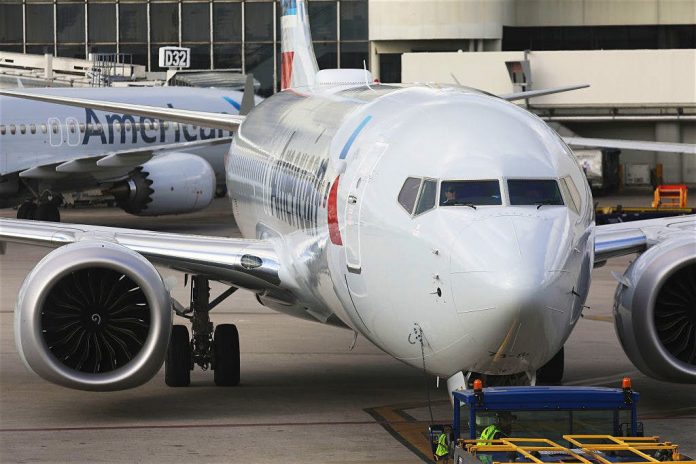
Why was the MAX grounded?
When the MAX was stopped from flying some five months ago, the primary concern was a flaw in MCAS (the Maneuvering Characteristics Augmentation System), a set of computer programming that was quietly added by Boeing without, the consensus now seems, adequate oversight from the US Federal Aviation Administration, the principal regulator certifying the aircraft. (That itself is something of a problem, and other global regulators are taking a firmer stance as a result.)
MCAS is needed because the new, big, fuel-efficient engines on the MAX are oversized for the 737’s frame, an aircraft family that first flew in 1967. Engines were smaller (but much less efficient) then, and Boeing made best use of their slimline size by designing the plane to sit closer to the ground, allowing manual loading of bags by staff at the airport. Since then, the various generations of the 737 have always faced the challenge of how to get bigger, more efficient engines onto this little plane. (Main competitor Airbus’ A320 dates back to the 1980s, when engines were already a bit bigger, and stands higher off the ground, so is less affected by this pressure.)
Boeing and the FAA are under the microscope
When the MAX was grounded, it was in a really surprising way: one by one, national and international regulators banned the jet from flying in their airspace. Normally, the lead regulator for the aircraft — the FAA, or perhaps EASA in Europe — would issue this kind of edict, although it’s a very rare thing to happen, especially today.
- The grounding of Boeing’s 737 Max could make flying more expensive
This was all taken as something of a vote of no confidence in the FAA, its closeness to Boeing, and the politicisation of both the regulator and the company. Phone calls from Boeing’s CEO to the White House begging for the plane not to be grounded are, to be blunt, not a good look and not a great way to conduct safety matters. Many people, especially at Boeing, hoped the fix to MCAS would be relatively swift. The 737 is a major cash cow for Boeing, and the grounding is costing it a serious amount of money: nobody’s really sure, but we’re probably talking somewhere between ten and twenty billion US dollars by this point.

But new problems keep being found. Some of these are the kind of problems that come up with any new airplane. The way aviation works is that airplane manufacturers and regulators use a series of specific types of instruction to airlines to fix all kinds of problems from minor to major. As one example: some early models of the Airbus A350 have to be turned all the way off and all the way on again every 149 hours, because there’s a bug with the computer system. This might sound really weird, but it’s the kind of thing that aviation safety is there to catch.
To oversimplify with an analogy, imagine you bought a car that was one of the first manufactured of its type. You might not be hugely surprised if the windscreen wipers went on the fritz, and you probably wouldn’t stop driving it immediately if it wasn’t raining. But if your steering wheel started behaving suspiciously, you’d stop driving the car, have it brought to the garage and make sure they fixed the wipers at the same time.
That’s where we are right now: the way that pilots interact with the 737 MAX is under huge scrutiny and, rather than repair anything in service, the regulators are going to tell Boeing to fix it now.
It’s also a big game of politics
Aviation is global, and every country has an aviation regulator (or sometimes in cooperation like in the EU). Each one must approve the MAX to restart flying in its airspace. There are some moves to work more closely together, but this is something of a political football. China, for example, is in the middle of developing the C919, an aircraft a little larger than the 737 MAX. Building a commercial jetliner at volume is about the most complicated thing that humankind has ever done, so it has a national interest in squeezing knowledge about how to do so from the process. A growing trade war also doesn’t exactly help Boeing, which is seen as too close to the White House right now.
Meanwhile, no regulator wants to be accused of sleeping on the job. The FAA will be making sure every single box is ticked, while other regulators will demand the US organisation shows its work, and may even require additional fixes beyond what the FAA demands. And that’s what makes it really hard to say when the MAX is going to return to service. There’s a new plan to duplicate a lot of the ways the flight control computer (of which MCAS is a part) works. That, as well as the number of changes to the planes and their systems, will all increase the time needed before each of the several hundred 737 MAX jets currently grounded can fly again.




